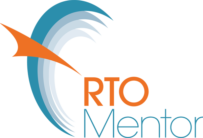Improving outcomes for Indigenous Australians
More needs to be done to ensure Indigenous Australians can access the same quality of services and have the same opportunities as other Australians.
There is no quick fix, and governments will need to focus on all areas of policy to make a difference, including education, health, housing, economic development and employment, in urban, regional and remote Australia.
In recent years, school attendance for Indigenous children in some areas has gone backwards. That is unacceptable.
While a lot of work is already underway across governments, COAG agreed an immediate, stronger focus is required to keep kids in schools and ensure safer communities.
COAG agreed to a range of measures to improve Indigenous school attendance, including:
- minimum school attendance benchmarks;
- publishing twice-yearly data on school attendance for all students broken down by Indigenous and non-Indigenous;
- a ‘no-excuses’ messaging campaign;
- support and compliance, such as truancy officers, to ensure children attend school; and
- conducting audits of attendance, including on-the-spot audits.
All governments agreed to work together on additional strategies to improve Indigenous school attendance in remote schools and communities, recognising this will lead to better outcomes.
Recognising that each State’s circumstances are different, COAG agreed that some flexibility in support and compliance measures may be needed.
Indigenous Australians, like all Australians, have a right to live in communities safe from violence and abuse.
There are some remote Indigenous communities (with populations greater than 300) with no permanent police presence and where nearby police cannot respond quickly.
COAG agreed to work together to ensure these communities are safe, including through establishing a permanent police presence in some additional communities.
